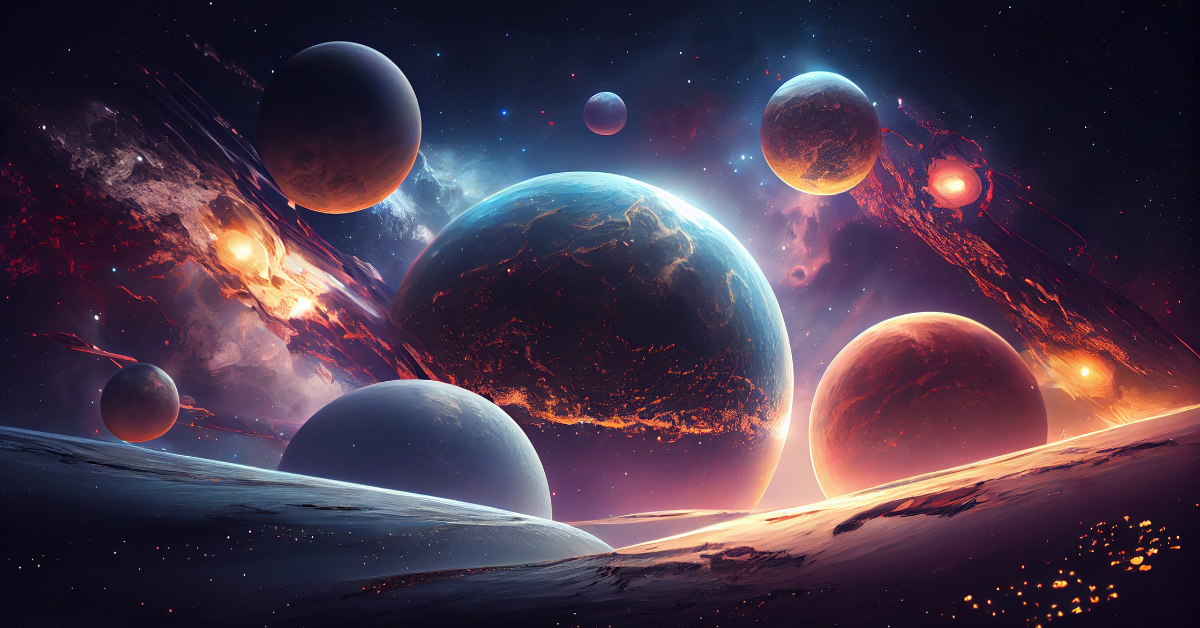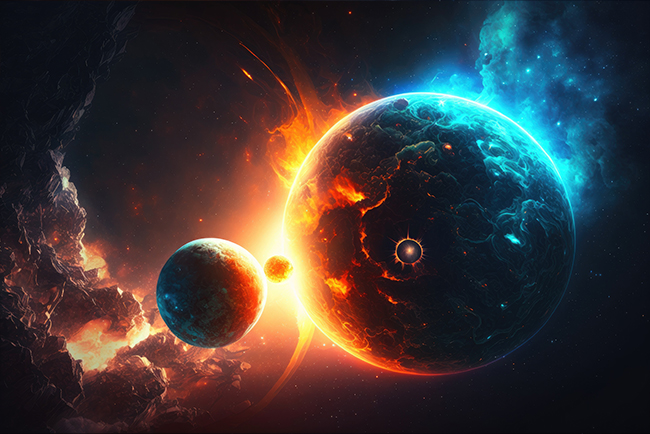Introduction: The Enigmatic Rahu In The Cosmos
Rahu, A Shadowy Presence In The Celestial Expanse, Has Intrigued Astronomers, Astrologers, And Enthusiasts For Centuries. This Comprehensive Guide Endeavors To Shed Light On The Enigmatic Rahu, Exploring Its Astronomical Identity, Cultural Significance, And The Profound Impact It Holds In Various Astrological Traditions.
Astronomical Foundations: Understanding Rahu In The Cosmos

Rahu Ketuis the name given to the Nodes of the Moon. Rahu is the North Node and Ketu is the South Node. They are points on the ecliptic where the Moon is in alignment with the Sun and the Earth. They indicate the precise point of the harmony with the three most important influences in our life- the Sun, the Earth and the Moon. This relationship plays an important part in the enfolding of individual consciousness.
Their role as Karmic indicators of our life is connected with their power to cause eclipses. The eclipses occur in the vicinity of Rahu Ketu during the Full Moon and the New Moon. (During New Moon when it is +/- 18 degrees from Rahu Ketu, the Solar eclipse takes place. At the full Moon +/- 11 degrees 15′ from the nodal position, the Lunar eclipse takes place.) As they symbolically eclipse the Sun (consciousness) and the Moon (the Mind), they have a great part to play in darkening our perspective in order to bring in new light. They deal with the concept of death and re-birth, transformation and regeneration. During the eclipses the light from the Luminaries is darkened. The energies created are powerfully psychic, pregnant with new information and occult power. The period after the eclipse is considered a rebirth of the Sun and the Moon. The role of Rahu Ketu in this powerful alignment of the Sun Moon and the Earth gives them the role of the ultimate controllers of the destiny.
Rahu As A Lunar Node: The Orbital Intersection*
At Its Core, Rahu Is A Lunar Node, One Of The Points Where The Moon’s Orbit Intersects With The Ecliptic – The Apparent Path Of The Sun In The Sky. Understanding This Astronomical Foundation Is Essential For Grasping The Unique Characteristics And Behaviors Associated With Rahu.
Orbital Dynamics: The Dance Of Shadows*
Rahu’s Orbital Dynamics Involve A Cyclical Dance Of Shadows, Resulting In The Phenomena Of Solar And Lunar Eclipses. This Section Delves Into The Mechanics Of Eclipses, Elucidating How Rahu’s Position In Relation To The Sun And Moon Contributes To These Captivating Celestial Events.
Cultural Significance: Rahu In Mythology And Belief Systems
Rāhu (Sanskrit: राहु,) is one of the nine major celestial bodies (navagraha) in Hindu texts and the king of meteors.[1] It represents the ascension of the Moon in its precessional orbit around the Earth, also referred as the north lunar node,[2] and along with Ketu, is a “shadow planet” that causes eclipses. Despite having no physical existence, Rahu has been allocated the status of the planet by ancient seers owing to its strong influence in astrology.
Rahu is usually paired with Ketu, another shadow planet. The time of day considered to be under the influence of Rahu is called Rāhu kāla and is considered inauspicious.[3]
As per Hindu astrology, Rahu and Ketu have an orbital cycle of 18 years and are always 180 degrees from each other orbitally (as well as in the birth charts). This coincides with the precessional orbit of the Moon or the ~18 year rotational cycle of the lunar ascending and descending nodes on the Earth’s ecliptic plane. This also corresponds to a saros, a period of approximately 223 synodic months (approximately 6585.3211 days, or 18 years, 11 days, 8 hours), that can be used to predict eclipses of the Sun and Moon. Rahu rules the zodiac sign of Aquarius together with Shani (traditional ruling planet).
Hindu Mythology: The Swallower Of The Sun*
In Hindu Mythology, Rahu Is Often Depicted As A Malevolent Force, Known For Swallowing The Sun During Eclipses. This Portrayal Symbolizes Cosmic Conflict And Is Deeply Ingrained In The Rich Tapestry Of Hindu Narratives. Exploring These Myths Provides Cultural Context To Rahu’s Significance.
Astrological Interpretations: The North Node Of The Moon*
Astrologically, Rahu Is Recognized As The North Node Of The Moon, Influencing The Karmic Trajectory Of Individuals. This Section Unravels The Astrological Interpretations Of Rahu, Examining Its Impact On Horoscopes And The Intricate Interplay Of Planetary Energies.
Vedic Astrology: Rahu’s Role In Cosmic Influences
Navagraha System: Rahu Among The Nine Planetary Influences*
In Vedic Astrology, Rahu Holds A Distinct Position Within The Navagraha System, Which Comprises The Nine Celestial Influences Governing Cosmic Energies. Understanding Rahu’s Role In This System Provides Insights Into Its Perceived Impact On Human Destiny And Life Events.
Rahu Mahadasha: The Period Of Rahu’s Influence*
The Concept Of Mahadasha In Vedic Astrology Introduces Cycles Of Planetary Influence, And Rahu Mahadasha Is A Significant Phase In This Framework. This Section Explores The Effects Of Rahu’s Dominance During This Astrological Period And Its Implications On An Individual’s Life Journey.
Western Astrology: Embracing The Lunar Nodes
The Lunar Nodes In Western Astrology: Rahu’s Western Counterpart*
In Western Astrology, The Lunar Nodes – Rahu’s Western Counterpart Being The North Node – Play A Crucial Role In Chart Interpretation. This Segment Compares The Vedic And Western Astrological Perspectives On The Lunar Nodes, Emphasizing The Shared And Divergent Beliefs Surrounding Rahu.
Karmic Lessons And Life Path: The North Node’s Influence*
The North Node In Western Astrology Is Associated With Karmic Lessons And The Life Path An Individual Is Destined To Follow. Understanding The Implications Of The North Node Sheds Light On How Rahu’s Influence Is Perceived In Western Astrological Traditions.
Impact On Personalities: Rahu’s Astrological Traits
Traits Associated With Rahu: Ambition And Desires*
Astrologically, Rahu Is Linked To Intense Ambitions And Desires, Often Leading Individuals To Pursue Worldly Success. This Section Explores The Astrological Traits Associated With Rahu, Offering Insights Into How These Characteristics Manifest In Personalities Influenced By This Celestial Force.
Challenges And Growth: Navigating Rahu’s Influence*
While Rahu’s Influence Can Bring Material Success, It Also Presents Challenges That Demand Growth And Self-Awareness. Examining The Duality Of Rahu’s Impact On Personalities Provides A Nuanced Understanding Of The Intricate Dance Between Ambition And Spiritual Evolution.
Rituals And Remedies: Mitigating Rahu’s Malefic Effects
Rituals For Rahu: Appeasing The Cosmic Forces*
In Various Cultures, Rituals And Ceremonies Are Performed To Appease Rahu And Mitigate Its Potential Malefic Effects. This Section Explores The Diverse Practices Employed To Harmonize Cosmic Energies And Seek Protection From The Challenges Associated With Rahu’s Influence.
Gemstones And Mantras: Harnessing Positive Energies*
Astrological Remedies Often Include The Use Of Gemstones And Mantras Associated With Rahu. Understanding These Practices Provides Insights Into How Individuals Seek To Harness Positive Energies And Balance The Cosmic Influences Associated With This Celestial Node.
Rahu In Transit: Navigating Cosmic Movements
Transit Of Rahu: Cosmic Wanderings And Influences*
Rahu’s Transit, Its Movement Through The Zodiac, Has Specific Implications For Individuals And Global Events. Exploring The Patterns And Influences During Rahu’s Transit Provides Astrological Enthusiasts With A Roadmap To Navigate The Ebb And Flow Of Cosmic Energies.
Collective Impact: Global Events And Rahu’s Alignments*
Astrologers Often Correlate Significant Global Events With Rahu’s Alignments. Analyzing Historical And Contemporary Instances Of These Alignments Offers A Perspective On How Rahu’s Cosmic Movements May Influence Collective Human Experiences On A Broader Scale.
Scientific Perspectives: Rahu In Astronomical Discourse
Scientific Understanding: Eclipses And Celestial Mechanics*
While Rahu Holds Cultural And Astrological Significance, Scientific Discourse Focuses On The Astronomical Aspects Of Eclipses And Celestial Mechanics. This Section Provides A Balanced View, Acknowledging Both The Cultural Symbolism And The Scientific Understanding Of Rahu’s Role In Cosmic Phenomena.
Gravitational Influence: Rahu’s Minimal Gravitational Impact*
In The Realm Of Astrophysics, Rahu’s Gravitational Influence Is Minimal Compared To Larger Celestial Bodies. Understanding The Scientific Nuances Helps Demystify Rahu’s Role In The Cosmos And Highlights The Importance Of Approaching Celestial Phenomena With A Blend Of Cultural And Scientific Perspectives.
Conclusion: Embracing The Cosmic Dance Of Rahu
In Conclusion, Rahu Remains A Celestial Enigma, Weaving Through Cultural Narratives, Astrological Interpretations, And Scientific Realms. From Its Role In Mythology To Its Influence In Individual Horoscopes, Rahu’s Cosmic Dance Adds Layers Of Complexity To The Tapestry Of Human Understanding. Embracing The Mystique Of Rahu Invites Individuals To Navigate Life’s Journey With A Nuanced Awareness Of Both The Tangible And Intangible Forces That Shape Our Cosmic Existence.
